Comparison Of Ryzen 7 2700X, Ryzen 7 5800X And Core I7-11700K Processors In Gaming
Can The Flagship Processor Of The Previous Generation Be Used With The New Graphics Cards? In This Case, Will The Processor Be Jammed And What Is Its Efficiency Compared To New Processors?
Here we will review the performance of three models of three generations of high-end Intel and AMD processors in gaming today. These processors include AMD Ryzen 7 2700X from the 2000 series Rayzen, as well as AMD Ryzen 5800X from the 5000 series and Intel Core i7-11700K from the 11th generation of Core processors.
Of the three models, the Ryzen 7 2700X was certainly not known for its gaming efficiency but rather for its speed in performing content production tasks and linear processing.
There was a time when we thought a processor like the Core i7-8700K was a better choice for games, as it would outperform competing models in almost every test and be priced the same.
The X-ray processors from the Raizen generation were also suitable for those with a gaming budget. Still, for those looking for maximum gaming efficiency, Intel processors were a better choice.
However, it was difficult to ignore the architectural power of the second and third-generation advisors in the games. Now that we have the fifth generation with fully upgraded performance, it is hard to ignore the improvements and advantages of the advisor.

If you’ve ever been to a processor like the Ryzen 7 2700X, which is now 3 years old, you might want to know how it works in games now and in 2021, and what the upgrade to its new-generation counterpart, the Ryzen 7 5800X, will look like. . So we will examine these questions by testing these processors in 30 different game benchmarks.
Here, all processors are equipped with 32 GB of dual-channel and dual-rank DDR4-3200 CL14 memory. For the motherboard of the test system in the AM4 socket, we have used the MSI X570 Unify with the latest BIOS update, and for the LGA1200 platform, we have used the Gigabyte Z590 Aorus Master motherboard.
We also tested games in 1080p, 1440p, and 4K resolutions with the Radeon RX 6900 XT graphics card.
Benchmark Games
At the beginning of the benchmarks with Battlefield V, we achieved interesting results. The RX 6900 XT can easily produce over 200 frames per second in 1080p and 1440p resolutions. In fact, even with the fastest 8-core processors today, we are still limited in CPU power at 1080p resolution and are so-called CPU limited.
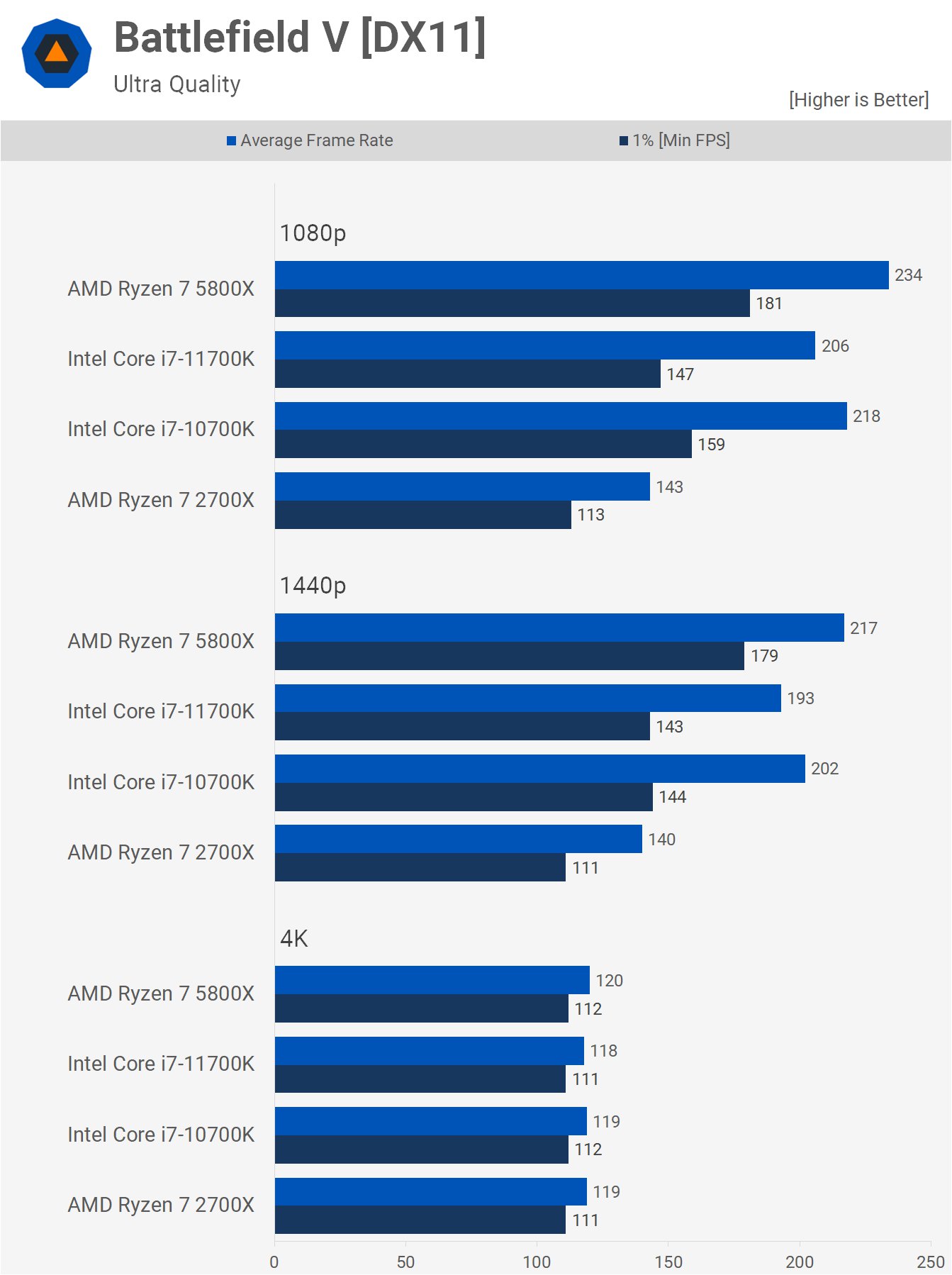
So while the Ryzen 7 2700X performed well at an average of 143 frames per second, it’s not in the Ryzen 7 5800X performance category at 234 frames per second. Here we see a 64% increase in efficiency by upgrading from the 2000 series to the 5000 series.
It is also worth noting that the Core i7-10700K (which is the same as the previous generation 9900K) is still 52% faster than the Ryzen 7 2700X, and we see the same distance in 1440p resolution.
Only when we reach 4K resolution with Ultra graphics settings can we see that the game with all 4 processors is completely limited to graphics performance or so-called GPU limited.
However, the huge difference in performance between the Ryzen 7 2700X and the newer Ryzen 7 5800X and Core i7-10700K / 11700K processors is interesting in the event of a bottleneck.
Note that if we had done this test with the RTX 2080 Ti card, the difference between the processors would have been less, and if we had tested with the GTX 1080 Ti, the distance would have been much less.
For example, the RTX 3070 limits 1080p performance to around 170 frames per second, reducing the difference between the Ryzen 7 2700X and the 5800X by about 20 percent, half the size we saw in the main benchmark.
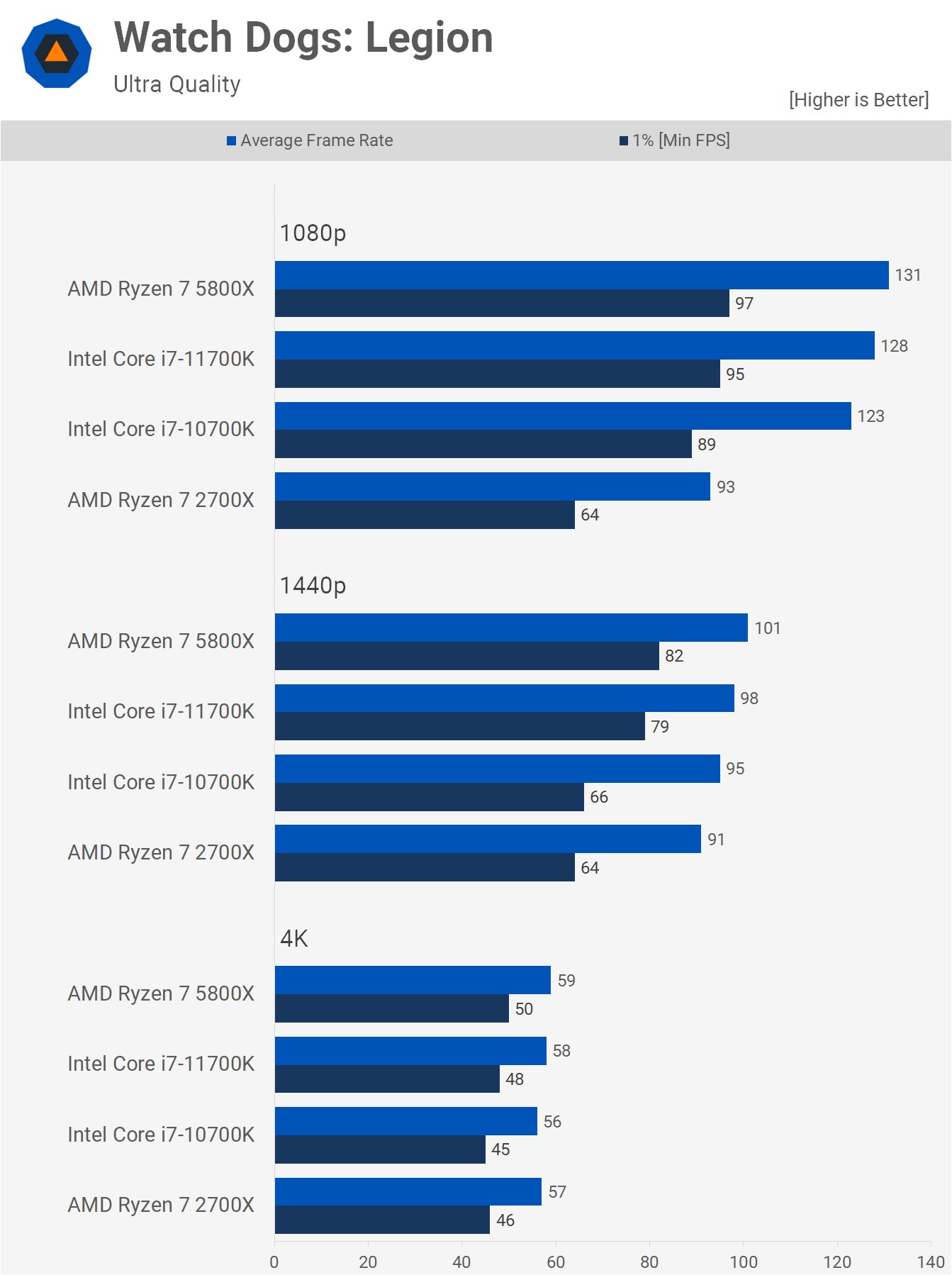
Watch Dogs: Legion is another CPU-heavy game that outperforms the 2700X by much less than the Ryzen 7 5800X in 1080p resolution, 41% behind it.
Even the 10700K appears almost 40% faster at the 1% minimum frame rate.
When it comes to 1440p, the distance between the 2700X and 10700K decreases slightly, but the 5800X is still 28% faster, which is a significant amount. In 4K, the game is completely limited to graphics card performance, which is why all four of our systems with different processors show the same performance.
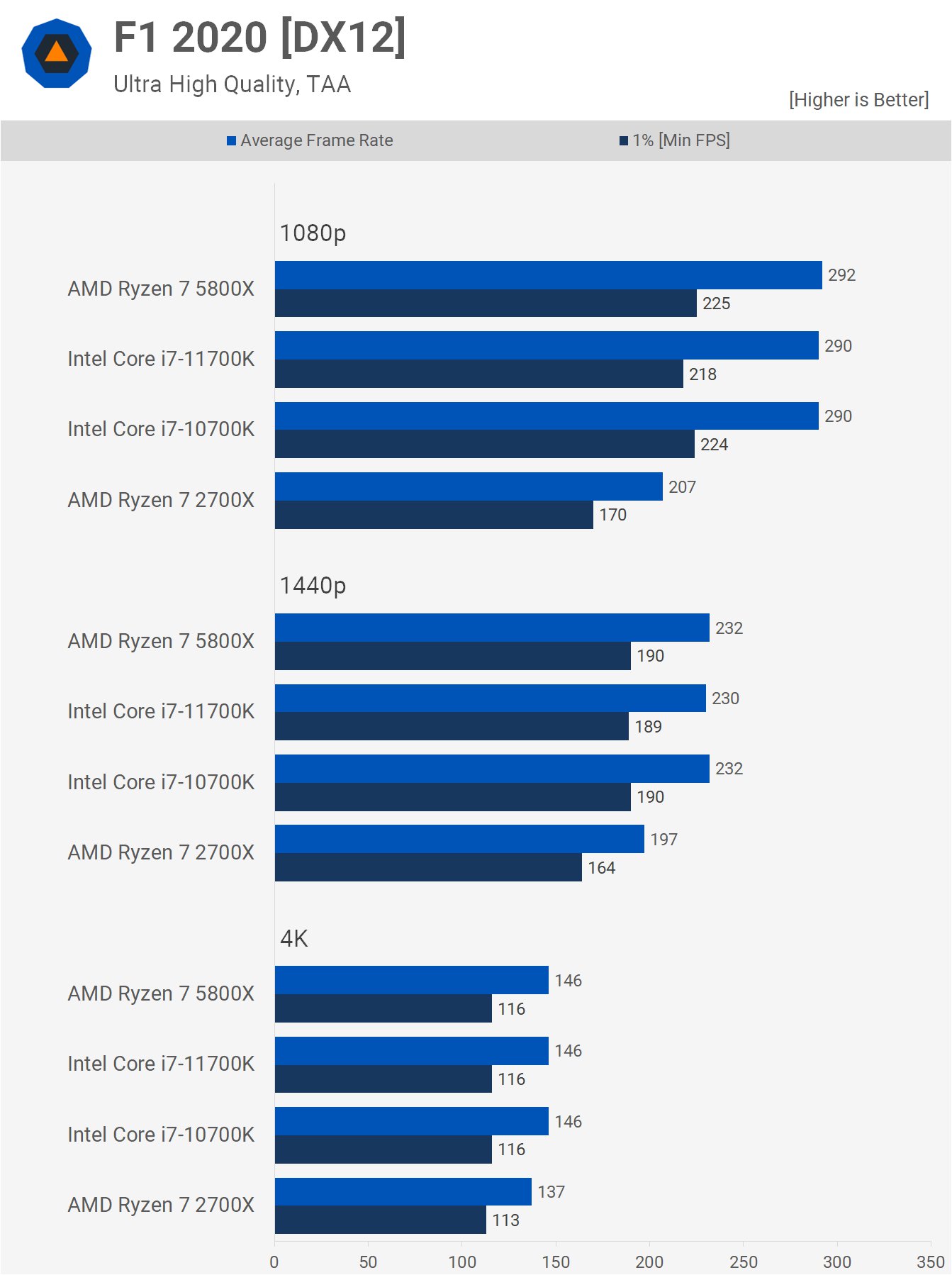
One of the games where you might need a high frame rate is F1 2020, and the 2700X did well at over 200 frames per second in 1080p. The Ryzen 7 5800X and Intel 10th and 11th generation processors are still run much faster, offering more than 40% higher frame rates.
Even at 1440p, the distance is still strong, with an 18% gain of 5800X.
In the past, in 4K resolution, the difference in efficiency is negligible, and all models are in the same category.
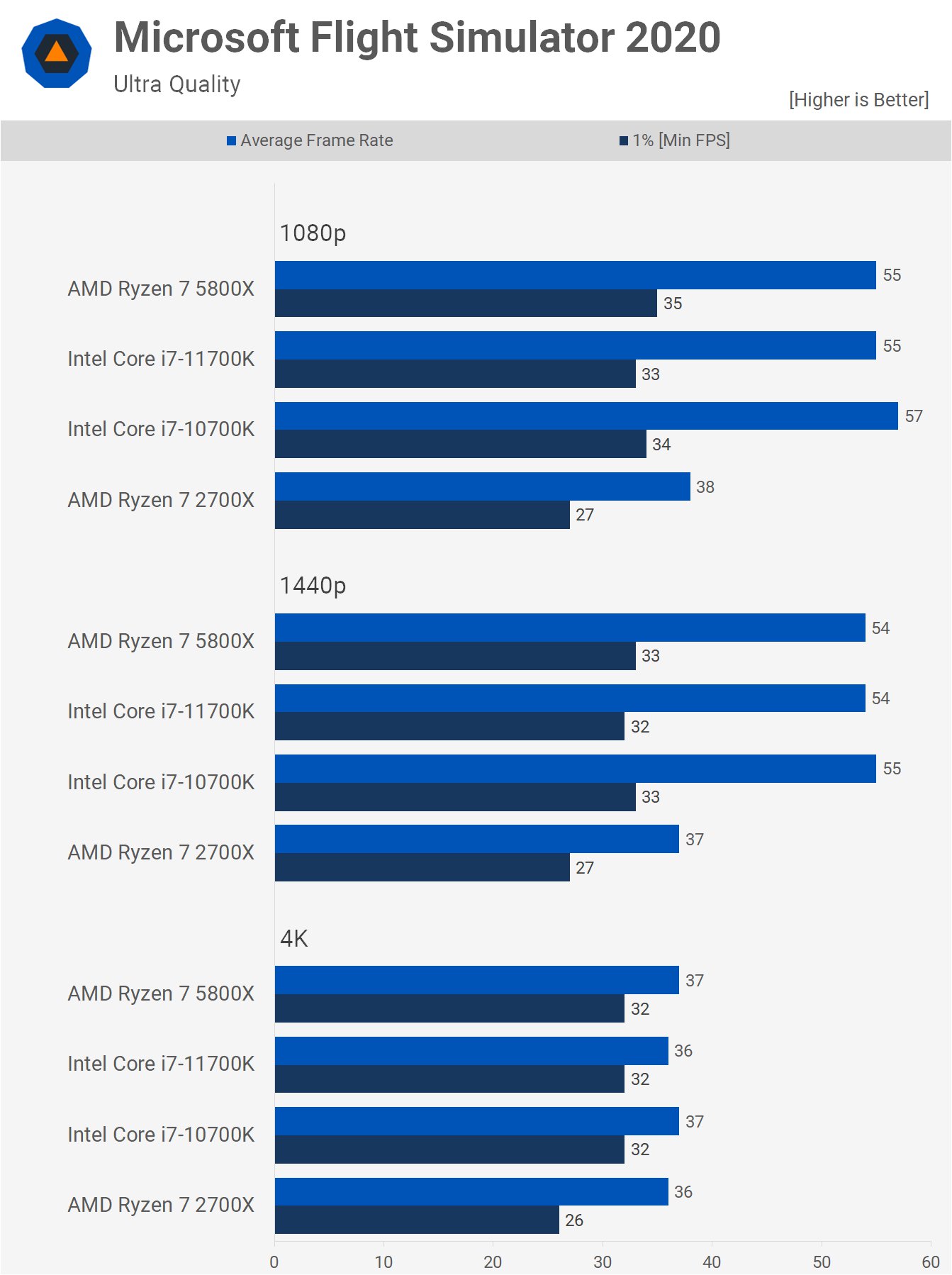
The title that suffers the most here is Microsoft Flight Simulator 2020. The maximum 2700X at 1080p in this game leads to an average of 38 frames per second, while the 5800X is about 45% faster.
Here we are faced with effective distances that completely change the way the game is played.
There is a similar difference in 1440p resolution, and until we reach the 4K benchmark, the GPU will not be our first limiting factor in the game. Even here, the frame rate of the 1% minimum with a Zen + processor is worse than other models.
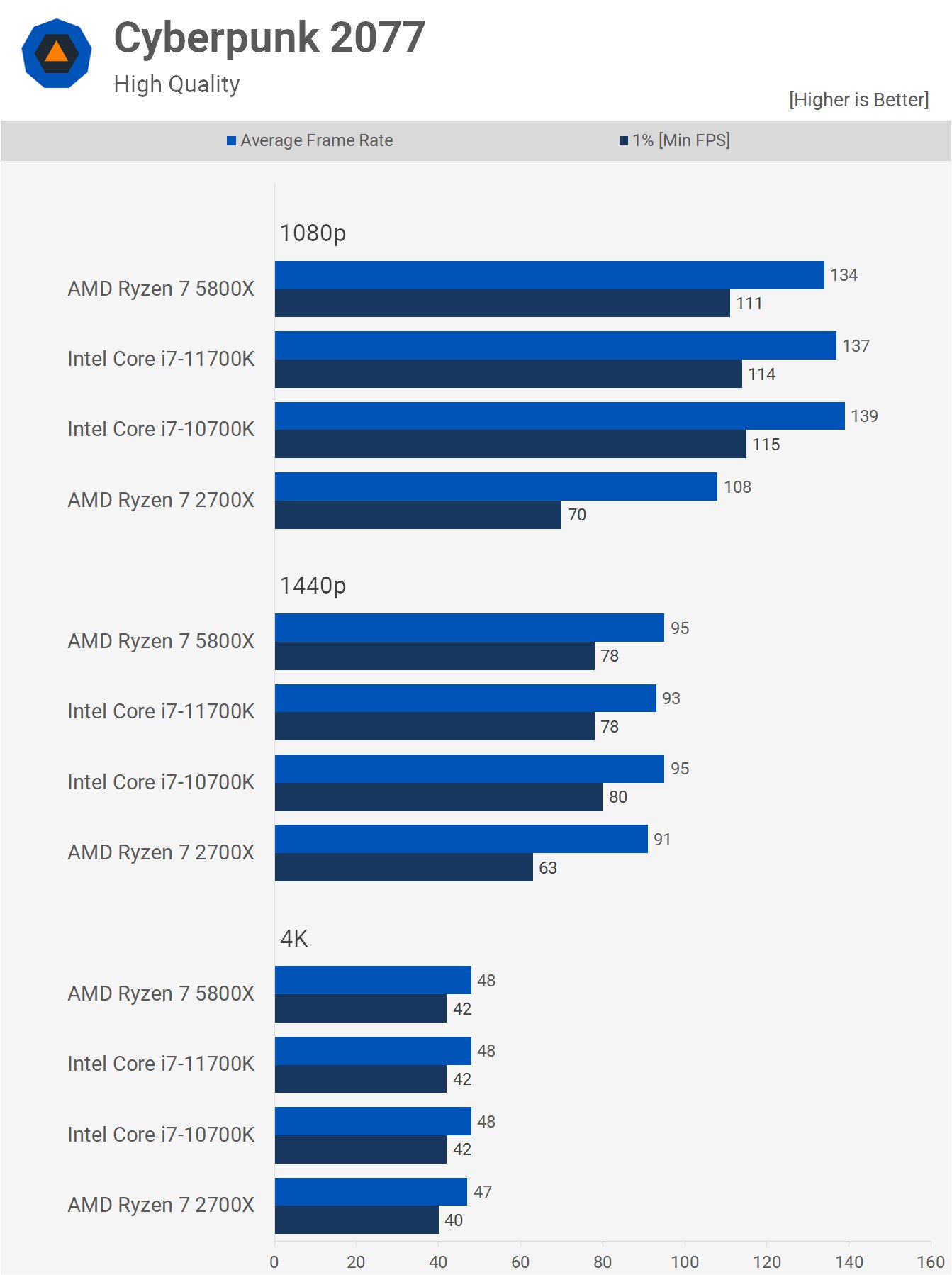
At Cyberpunk 2077 and 1080p resolution, the 5800X processor is almost 60% faster than the 2700X, and at 1440p and the minimum frame rate is around 25% higher.
The 2700X will not disappoint mid-range to low-end systems and graphics cards capable of delivering 60 to 90 frames per second. Still, for higher-end graphics cards and more professional components, you will need to upgrade the processor.
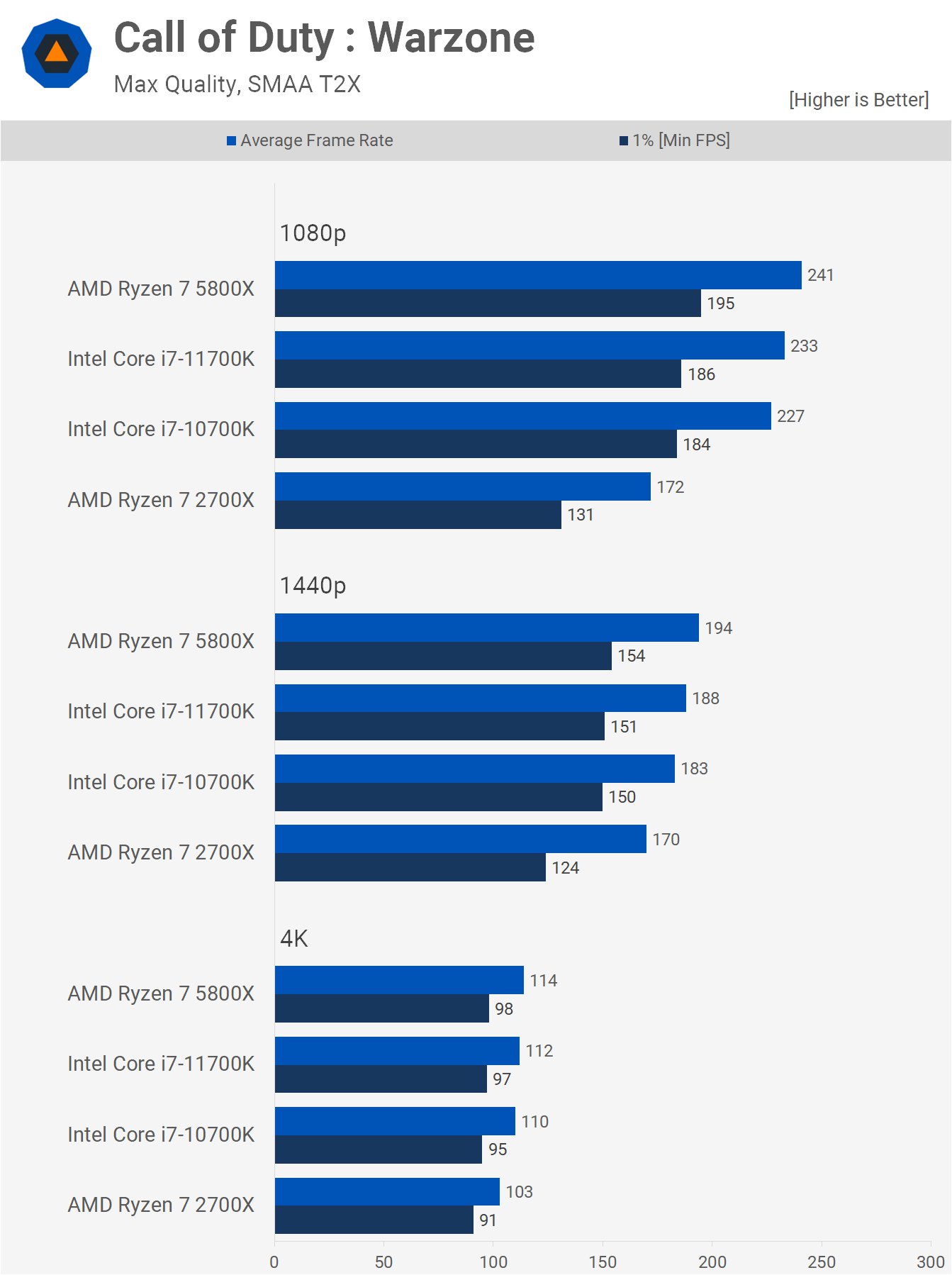
Call of Duty: Warzone is an online game in the style of Battlefield V, and we expected the Ryzen 7 2700X to perform poorly in this title, but surprisingly it did not do so badly.
Of course, the 5800X offers about 50% more efficiency at the minimum frame rate, and the efficiency of Intel’s 10th and 11th generation processors is much higher. Still, the average performance of 172 frames can not be counted, and vice versa, suitable for gaming at high frame rates.
In addition, the efficiency difference at 1440p has been completely reduced to 14%.
In fact, the 2700X can provide the ultimate gaming experience with powerful graphics cards like the RTX 3060 Ti.

Shadow of the Tomb Raider is a single-player game that imposes heavy processing on the CPU, and here the 2700X is about 60% slower than the 5800X and 50% slower than the 10700K at 1080p, which is a huge difference.
However, by limiting the game efficiency to the graphics card in 2K and 4K resolutions, this efficiency difference is also significantly reduced.
Overall efficiency
Now it’s time to compare these processors among all 30 games tested, and we’ll start with the results at 1080p. Let’s start by comparing the Ryzen 7 2700X with the Ryzen 7 5800X, and as you can see, the Zen + processor is, on average, 23% lower.
There were only 4 games in which we saw a single-digit difference, and in 8 games, the efficiency difference was 30% or more.
War Thunder, Battlefield V, Shadow of the Tomb Raider, and Word War Z were among the worst performers on our older processor.
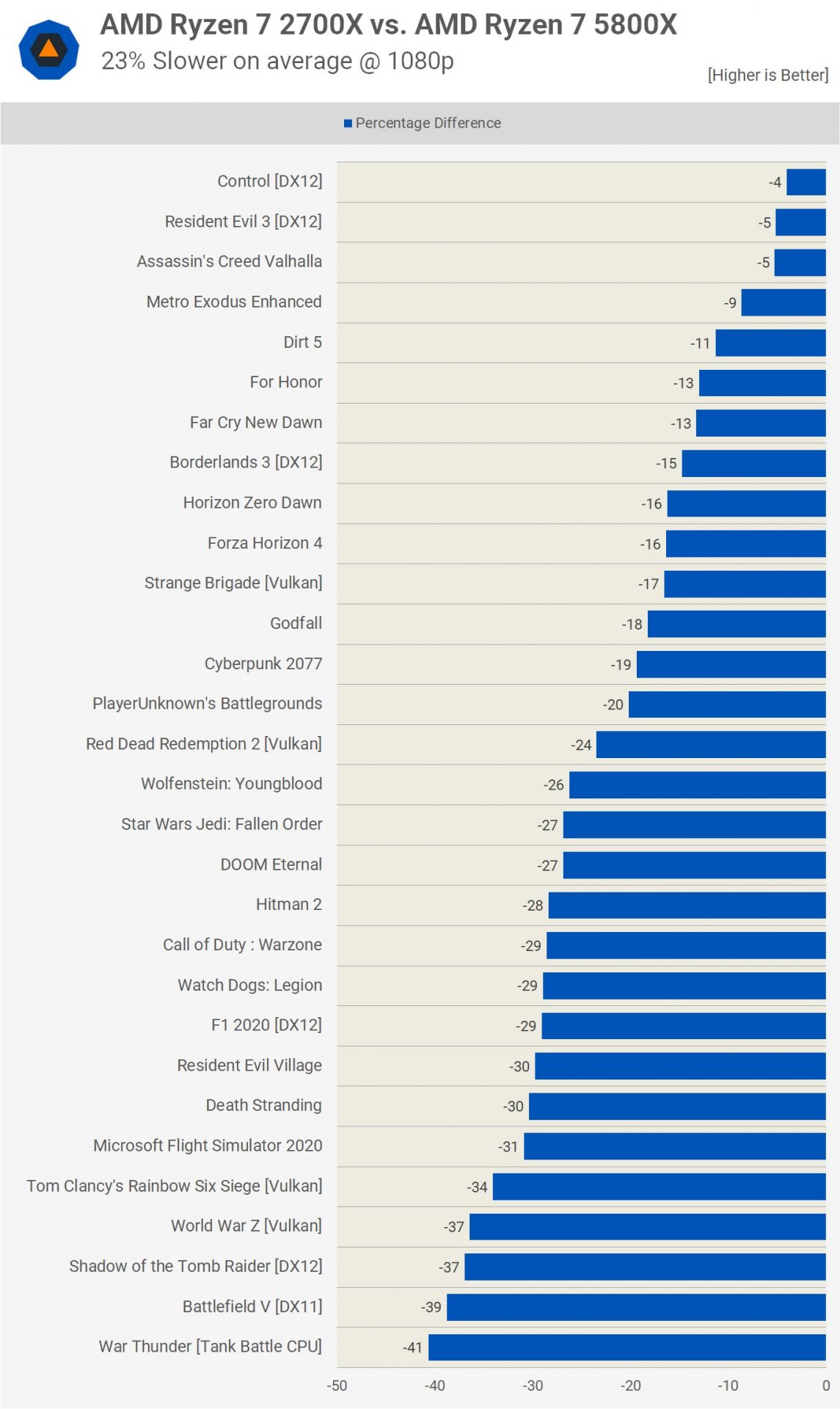
If you are using the 2700X with a powerful modern graphics card, it may be time to upgrade the processor, and the 5800X would be a good choice. But if you are thinking about both working and playing with your system, you might want to consider buying the 5900X as well, as it usually works a little better for content production processes.

Of course, if you play with a high-end graphics card, very high frame rates are not a priority for you, and instead, you care about image quality and resolutions such as 1440p and 4K, then less CPU efficiency will be a problem for you.
As you can see, the 2700X is only 13% slower at 1440p than the 5800X, yet we have 8 game titles with an efficiency difference of 20% or more.
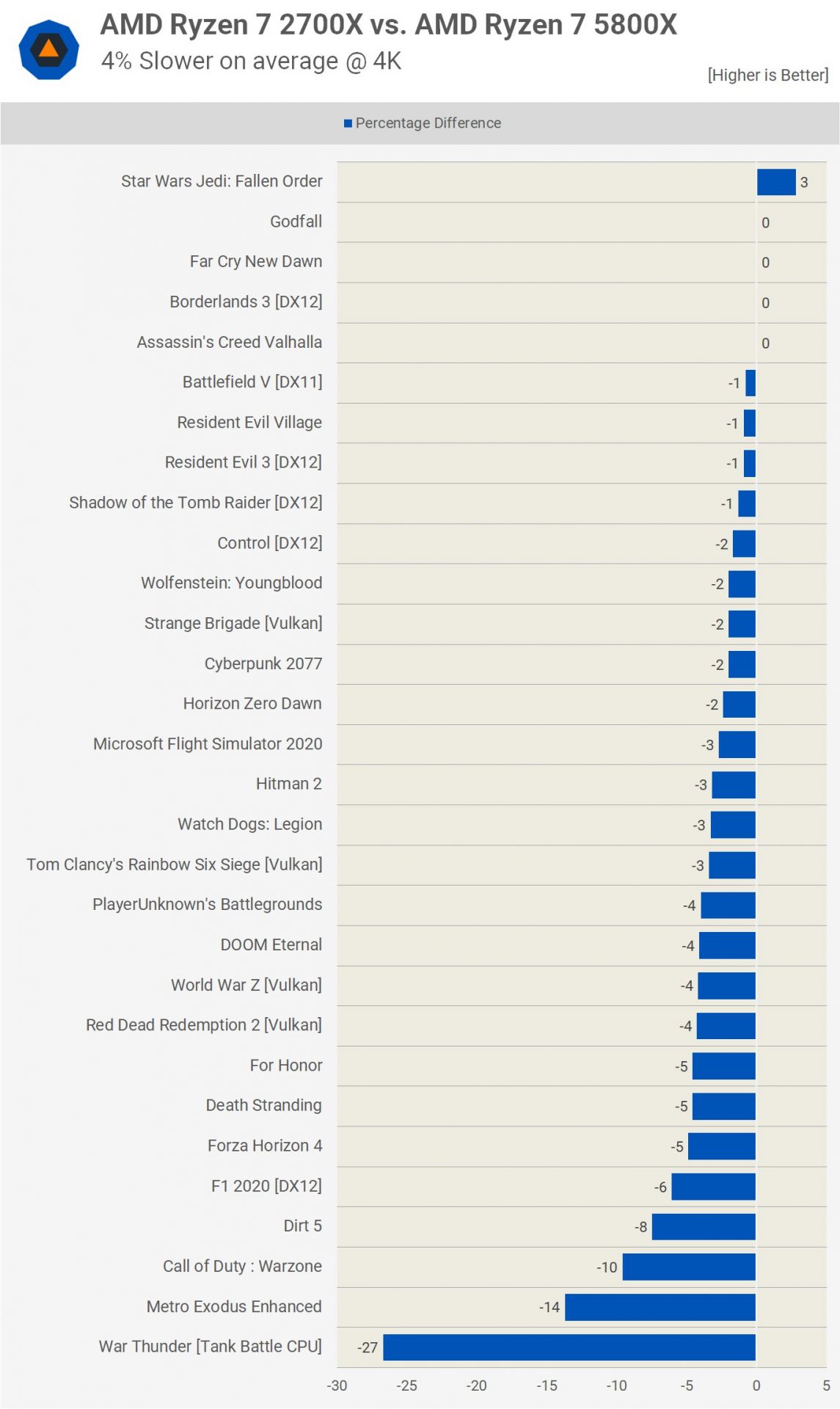
After all, in 4K, everything depends on the GPU, and even with a compelling card like the RX 6900 XT, we generally see little or no difference in performance between the 2700X and the 5800X.
However, if you have a card like the RTX 3070 or RX 6800 or better, upgrading the processor to a more modern model makes sense.
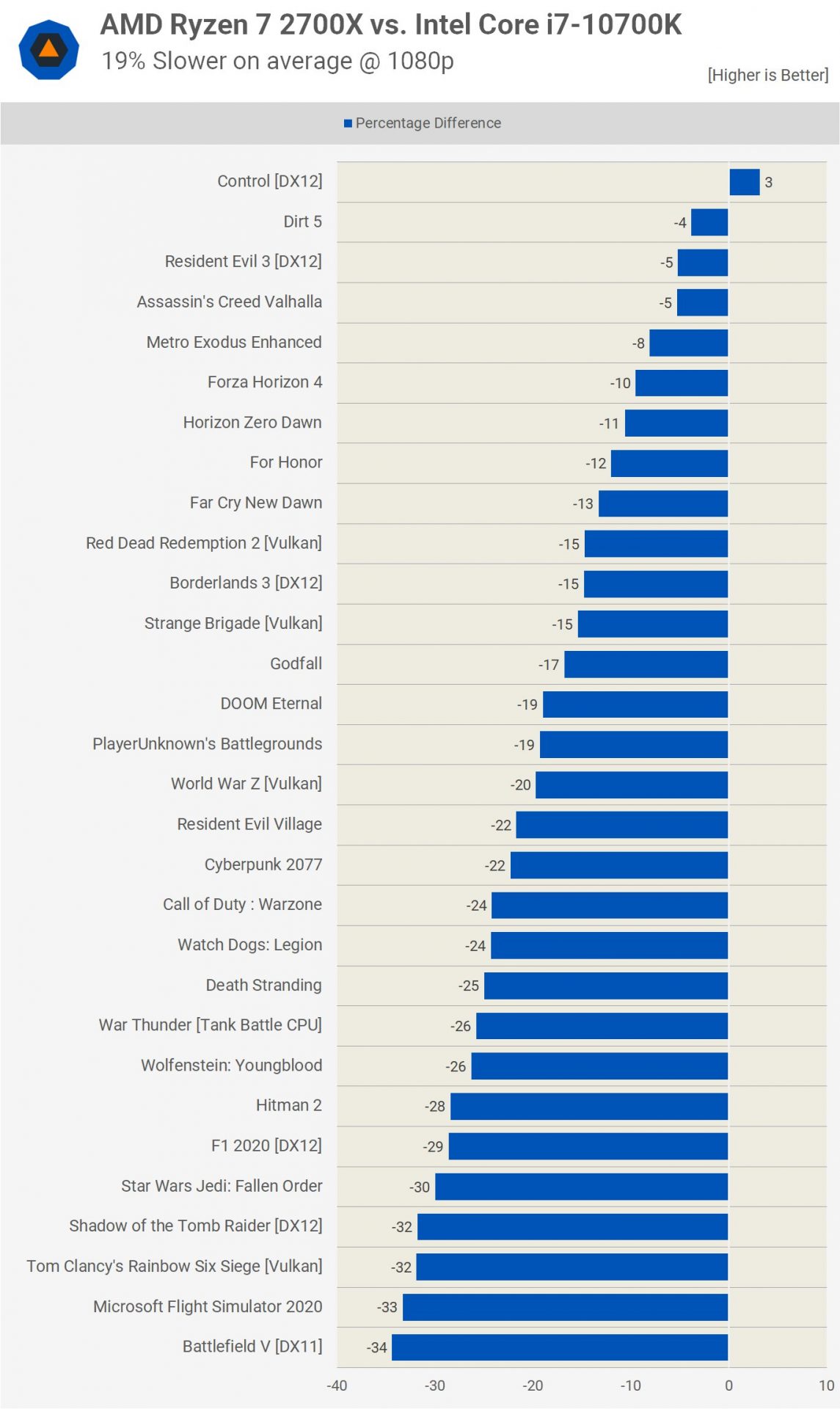
The Ryzen 7 2700X is slower than the Core i7-10700K, following it by 19% at 1080p. Needless to say, the distance between this CPU and 11700K is about the same. The 2700X was built to compete with the Core i7-8700K, where Rayzen excelled in the number of cores for heavy processing, and the Core i7 was a better choice for gaming efficiency.
Conclusion
The performance review of the Ryzen 7 2700X in 2021 in newer games and much more powerful graphics chips was fascinating. You can look at the data recorded in the charts above and immediately conclude that the 2700X has awful gaming performance, but don’t forget that this chip will only look bad if you focus on 1080p performance.
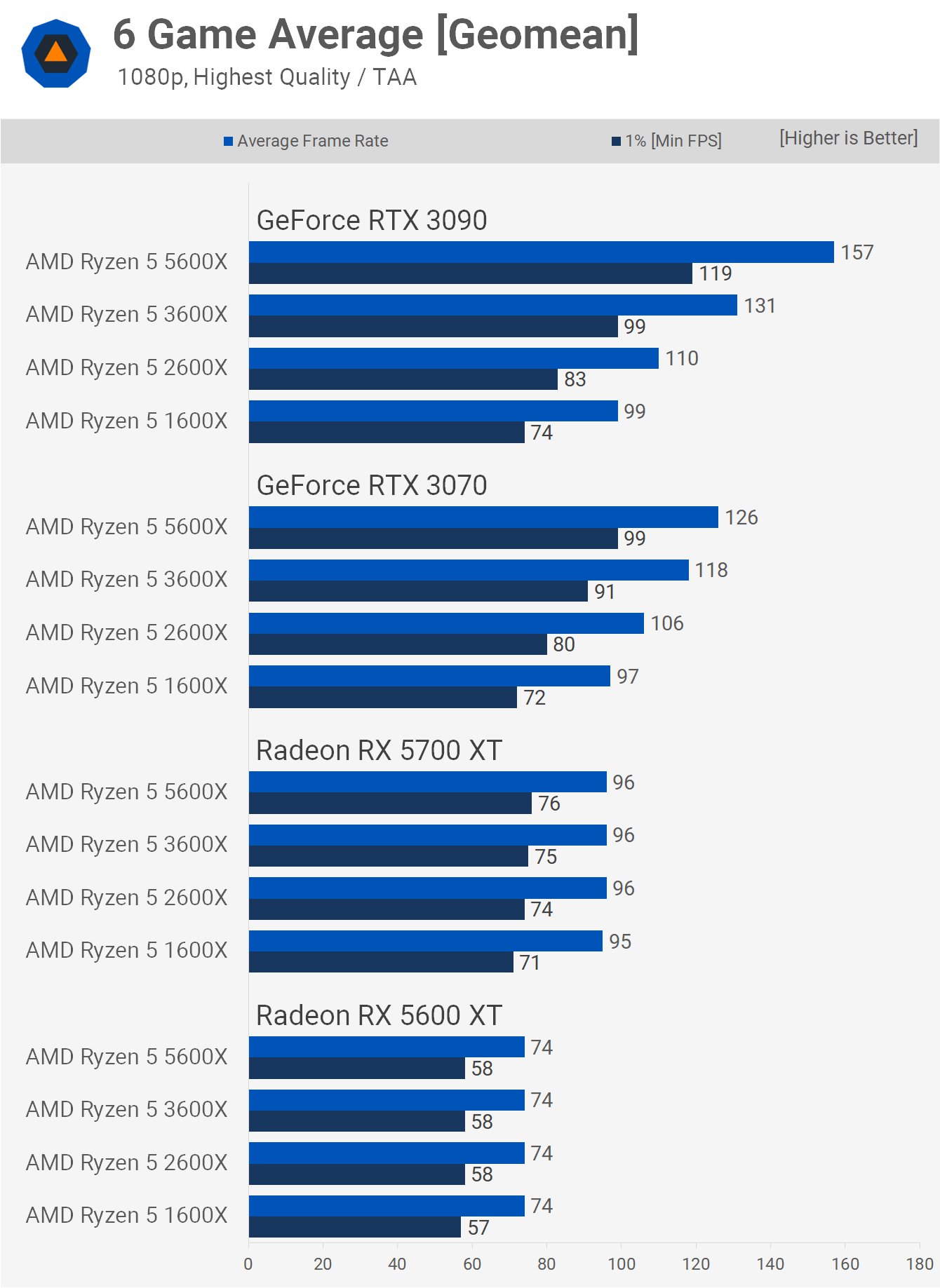
In another previous review, the 31% efficiency difference seen using the RTX 3090 between 4 different generation processors dropped to 24% with the RTX 3070, and then only 6% with the RX 5700 XT.
Its efficiency is comparable to RTX 3060, RTX 2070 Super, and even GTX 1080 Ti.
This means that if you use the 2700X with previous-generation graphics cards in the $ 400- $ 500 price range, it won’t be much slower than the 5800X.
However, relatively old processors such as the Core i7-8700K and Core i9-9900K are still delicious gaming options, unlike the 2700X, and owners of these processors still do not need to upgrade their gaming processors.
On the other hand, those who once bought the 2700X now have the option to upgrade to the 5800X, 5900X, or 5950X to experience significant improvements in both gaming performance and software.
What do you think about the efficiency of the processors tested and their purchase value? Let us know what you think.













